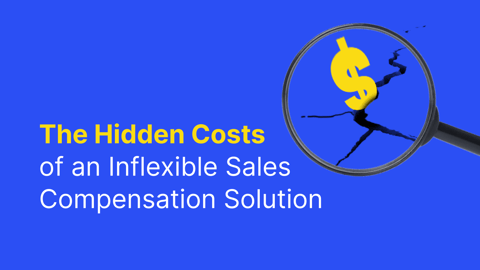Let’s talk sales pipeline dashboards. Whether you’re a newbie to the world of sales or an experienced manager leading teams across many global territories, you’re likely to have seen, or at least heard reference to, a sales pipeline or funnel. And if you’ve had any form of interaction with sales-related software, you’ll have seen how various data, figures and reports look on your laptop, tablet or mobile device.
Hazarding a guess, some of this output is visually quite impressive but may not have any relevance to your sales team. Or perhaps your sales forecasting data or reporting may be churned out on an unreliable, unreadable spreadsheet format. Regardless of the look and method, are you sure any of this is sales pipeline dashboard software is helping your sales pipeline to flow freely toward closing a deal?
Confused, intrigued or both? Then follow Varicent’s quick, dirty yet reliable guide to the pipeline stages and what your dashboard should ideally provide at each stage.
Awareness: Who are your Potential Customers?
As your sales team start prospecting, they’ll be digging for customer gold or lead nuggets. In terms of pipeline dashboards, the diamonds come in the form of high-value customer data and records, historic reporting and which territories are ripe for the picking or a repeat product order. This information lays a solid foundation for every other stage, so it needs to be clear, accessible and correct. And remember this useful mantra at every stage ‘Data is only helpful if it can be turned into insights’.
Discovery: Qualifying Leads and First Client Meetings
A lot can happen between the first and second stage and much of that activity and subsequent dashboard visibility revolves around getting the right sales force on task. Not only are you evaluating how many of your team will be needed in a territory for a product launch (or not needed if it’s an area that’s overstaffed), but also whose quota it falls into. There may also be many wanting confirmation of earning and compensation potential and whether winning or warming up a lead is a case for commission. Whether your defining roles for your team or drilling down into the purchasing history and buying habits of your potential customer, let your pipeline dashboards and sales software do the talking for you.
Evaluation: The Deal’s on the Table
The stage of qualifying and evaluation is where both customer and sales reps start to reveal their cards. For the sales rep, they are at a place where they can harness the power of a good dashboard by showing a customer what’s in it for them and how a product is performing for other customers. This only works if said sales rep trusts and understands the analytics and can back up their pitch by showing and explaining what the data means. With the help of a clear dashboard, everyone stays informed.
Intent: Negotiation and Finalized Proposal
At this delicate juncture there’s all to play for and your dashboards will be fully engaged, showing the data and charts that could nudge a negotiation along. By now, your customer has made it clear that they’re in the market to purchase, your sales guys know a close is withing touching distance, but in the wild west territory of sales, what dashboard displays can help your field guys get beyond that stand-off? Sales teams may need to be reminded of what they stand to gain by checking in on their own performance-related reporting in relation to the rest of the team. That, along with the motivation of revisiting a rock-solid compensation plan should help move things along.
Purchase: Closing the Deal
With a deal in the bag there should be both a happy customer and even more happy sales rep. To make the whole thing ‘real’ it’s vital that figures related to a successful negotiation can be input with updates for both the business and rep updated on a dashboard display in real time. Your achieving exec will want to see how this stacks up against other deals, months and team members, and you’ll want to have a view that informs any performance review or bonus conversation. In terms of the customer, their purchase record will be updated, thus avoiding the potential embarrassment of approaching them too soon with another sales pitch. The clearer this is on your interface, the more informed everyone is.
After all the legwork, it should all come down to this – closing the deal. This is very much where you and your team can reap the benefits of a fair and robust compensation scheme software package. The satisfaction of getting a client to sign on the dotted line is that much sweeter when your successful sales exec can see there and then what that equates to in commission and bonuses. If on the other hand the negotiations fall flat, you can use your sales performance management software to see whether there’s an ongoing performance issue or if it is linked to unfair quota expectations or poor territory management.
Loyalty: Product Delivery
This is the end point in the sales pipeline that the swirling river of negotiation and uncertainty gently falls into a wide expanse of calm and profitable waters. Ideally, right? But even this satisfying end chapter requires work, maintenance and the upkeep of records. During this final part of the sales pipeline, your entire suite of reporting tools and dashboards has a role to play. In terms of sales performance management, what is the next goal for your most valuable player and how will you keep them incentivized in the meantime? Using the dashboard and the appropriate sales software package, what can you uncover about those that are struggling to meet their targets? And is it time to redefine and restructure your territory borders?
With a good software system deployed across your sales pipeline in its entirety, you and your sales team can feel confident, informed and armed with the right tools and data to take a deal from inception to closure.
To ensure you’re looking at all the right dashboards to support your sales pipeline, call your Varicent sales representative today or visit www.varicent.com



